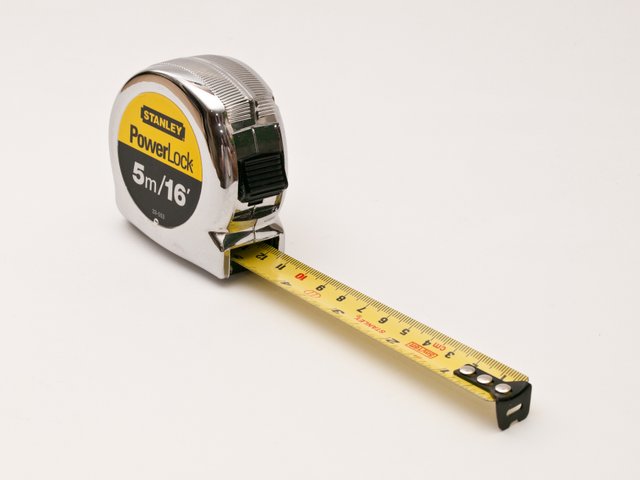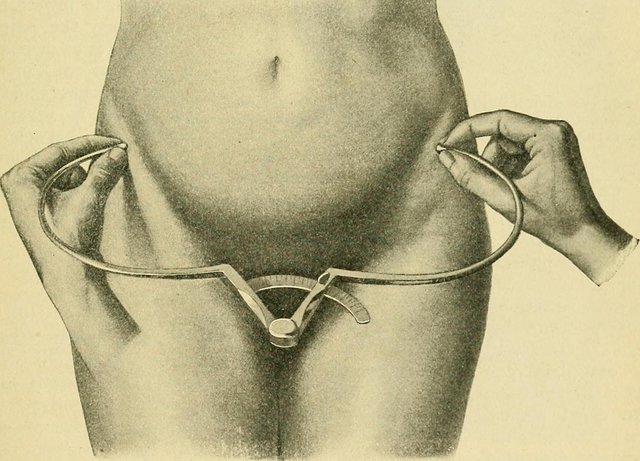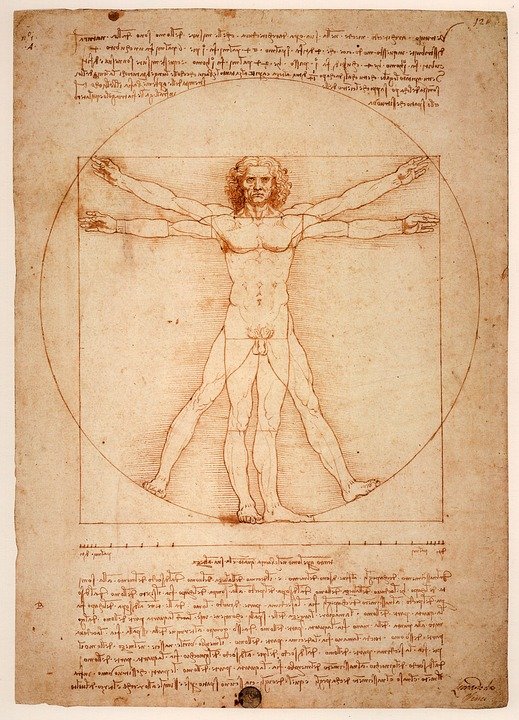ANTHROPOMETRY- THE SCIENCE OF BODY MEASUREMENTS
Hello steemians!
What a way to have been introduced to this wonderful platform. A big thank you to my friends @temitayo-pelumi, @rharphelle and @addempsea for opening my eyes to innovation and forum as this.
Using this medium to introduce myself. I go by the name Adeosun Adeyinka, a graduate in the field of mechanical engineering at the Federal University of Agriculture, Abeokuta in Nigeria. Writing and reading has been my key hobbies and i thank this forum for setting up a platform like this to improve my thinking and writing on science, technology and engineering at large.
Lets get to business!!!
Woke up in a very cold morning, checked my blog and noticed its blank still no ink to pen down something educative here. Then the word ‘’Anthropometry’’ struck my head. Why can’t I break this word for a layman and those who have heard and had little knowledge about that word.
Lets be patient along together as we digest that word…
I cannot actually imagine wearing clothes of a decade ago because I know for sure it won’t fit. Likewise my shoes or hat because the body size cannot just fit into it, that is just the explanation I will give to my very young sibling if on earth he ask me about ANTHROPOMETRY. That is if she can (laughs) but never underestimate anyone.
Lets go to the main discussion proper...
INTRODUCTION
Anthropometry can be defined as the term which defines the measurements of the human body in relations to dimensions of bone, muscle and tissue (fat). When we say dimensions we are basically referring to the height, length, width. Weight and age is also a crucial case study when we talk of anthropometry. The measurements involved give rise to data which is the beauty of anthropometry which can basically be called "ANTHROPOMETRIC DATA".
Anthropometrical data are vital in areas such as anatomy, ergonomics, forensic science, radiology, podiatry, archeology, anthropology. Other areas include plastic surgery, nutrition and their areas of application. A very reliable anthropometric data are essential and important to design a particular product for a given population.

HISTORY OF ANTHROPOMETRY
Dated back to the immemorial civilization of the Egyptians, Romans and the Greeks, they used anthropometric measurements for their cultural goals i.e (artworks) to denote the beauty, power and other interesting characteristics of the human form. The method of symmetry was appreciated and the unit of measurement which consists often of the breadth of the human hand and how long the human feet were.
A famous example is the works of the famous artist Leonardo da Vinci who obtained measurements of the human body by analyzing cadavers (a dead body) which were intended for dissection. A mix art and mathematics were basically used in demonstrating anthropometry in the Stone Age.
Who developed Anthropometry? Alphonse Bertillion (1853-1914)
Alphonse Bertillon was the son of Louis-Adolphe Bertillon who happened to be a Physician and the founder of S.A.P(Society of Anthropology of Paris). We know clearly that the process of obtaining measurements of the human body had originated in the immemorial civilization but Alphonse Bertillion is credited as the father of anthropometric base on the anthropometric system which is the classification system also known as “Judicial anthropometry”.
Recent History of Anthropometry
Around 1850’s, height was a crucial factor commonly used to grade and identifying men within military group. Historical measurements of young men have helped in the identification of recruits in the military.
Anthropometry has been employed since the mid nineteenth century for different purpose in both developed and underdeveloped countries. In order to redefine growth standards and to study the nutritional status of a population and an individual during food scarcity and economical/political riots, population groups have been measured and also to assess the effectiveness of an economic development schemes.
ESSENCE OF ANTHROPOMETRY
Body build, composition and constitution and with different dimensions of the body of human in relation to their workplace dimensions, machine, clothing and their individual environment, anthropometric systems are main considerations in fields of occupational health, safety and ergonomics. To define different methods and variables, t-he anthropometric systems of theories are applied in the fields of consideration mentioned below.
Epidemiology
Anthropometry is key in the area of how the study of diseases are spread and controlled within a population. It is used to investigate weight, height, percentage of body tissue (fat) which are termed as body measurements. Anthropometric measurements are used frequently to examine malnutrition in resource-ill clinical settings.Forensics and criminology
Forensic is one aspect of science that is concerned with criminal investigations and civil laws. During the course of an investigation, scientific evidence are collected, gathered, preserved and analyzed by the forensic scientists. Relating these to anthropometry, a forensic anthropologist in a legal setting studies the skeletal structure of human which helps in the identification of criminal behavior and traits. The case of Osama Bin Laden was a logical example. Anthropometry is very crucial in investigating crimes and criminal facts.Ergonomic
In this jet age of ours, an application of understanding of human factors to the designs of equipments, systems and working methods by the ergonomics professionals in order to meliorate safety, health, productivity and comfort.
Ergonomics can be of different kinds:
Physical ergonomics which is related to the physical activity of man as they relate to physiological, biomechanical and human anatomy. It can also be broken down as the direct interactions that users have with devices, in order to make interactions safe and error free. Physical ergonomics includes material handling, working postures, workplace layout, health and safety. see more here
Environmental ergonomics is related to man and his ambient environment on how they interact. This includes climate (temperature, humidity, heat and radiation), vibration, noise etc on how they affect man.
Cognitive ergonomics is mainly concerned with motor response, intellectual reasoning as they affect the interaction among humans and other elements. It can also be said as how people relate or interact with each other while using a system from a psychological point of view. Examples include work stress, human reliability as they relate to human system design.
Organization ergonomics is in relation to organizational culture, virtual organization, quality management not neglecting the optimization of socio-technical system which include their processes, policies and structures. (www.ergonomics.jp/original/inter/ergodef_organizational.html)
Biometrics
This refers to the manner by which human are distinguished by their traits or characters. It is also used in the computer world as a form of access control or a science of identification. Biometric identifier can be regarded as physiological behavior against characteristics behavior.Fashion design
Anthropometry is very essential in private companies and governmental agencies to design a range of sizes of shoes or clothing and other items been worn. Foot anthropometry is one vital sub-division of anthropometry when it comes to designing and production of footwear. Measuring devices can be used to determine the size of a shoe directly or to check detailed dimensions for constant production of footwear.
MEASURING INSTRUMENTS USED IN ANTHROPOMETRY
- ANTHROPOMETER
This is an instrument used for measuring different dimensions of the parts of the human body. It is mainly made of an aluminum material which consists of a reading scale.
SPREADING CALIPER
This instrument is used to measure the dimension of the head and also the body width or depth of children of less than 15years. The device is made of light stainless materials with a steel joint connected to its arms to improve the gauge balance.PELVIMETER
This is an instrument mostly used by the gynecologist which is used to measure or examine the pelvis of a female either during delivery or labor process. It is also made of light stainless materials. Just like the spreading caliper, its arms are also connected with a steel joint to improve the balance of the gauge. It also has a removable magnifier to read scale clearly and adequately.

MODIFIED THORACOMETER
This device is primarily used for easy determination of the foot length. While using this instrument, respondents are allowed and permitted to stand with their feet slightly apart in which the weight can be evenly distributed on both legs. The device is made up of an aluminum square section rod with a millimeter scale of (0-400mm) fitted on both sides.SMALL HEIGHT ROD
From the word height we can technically say that this instrument is used to predict accurate height measurement for different purpose i.e.( medical diagnostics, sports, for biometric data etc.)SLIDING CALIPER
This device is used to determine a selected dimension of the head part. We know that nose, ear, mouth and eyes are all connected with the head. It also a special instrument that can be used to measure the distance between inner and outer corner of the eyes, lower jaw height, width of the mouth, nose height, facial height, ear length and to mention few.
- BEST II K–501 CALIPER
This instrument is calibrated and designed for a standard measurement of the skinfold thickness. The measuring range can be extended to about 120mm.
CONCLUSION
We can therefore say that Engineering anthropometry applies these data to tools, equipment, workplaces, chairs and other consumer products, including clothing design.
The objective is to provide a workplace that is efficient, safe and comfortable for the worker to enhance productivity.
I will be back with the different methods employed in taking anthropometry data.
REFERENCES
Goonetilleke, R. S., Edmond, C. F. and So, R. H. Y. (1997). “Foot anthropometry in Hong Kong”. Proceedings of the ASEAN 97 Conference, Kuala Lumpur, Malaysia, 1997. pp. 81-88.
Jain, A. K., Hong, L., Pankanti, S. (2000). Biometric identification”. Communications of the ACM. 43 (2): 91-98. doi:10.1145/328236.328110.
Jain, A. K. and Ross, A. (2008).”Introduction to Biometrics”. In Jain, A. K., Flynn., Ross, A. Handbook of Biometrics. Springer. pp. 1-22. ISBN 978-0-387-71040-2.
If you write STEM (Science, Technology, Engineering, and Mathematics) related posts, consider joining #steemSTEM on steemit chat or discord here. If you are from Nigeria, you may want to include the #stemng tag in your post. You can visit this blog by @stemng for more details.


Welcome to the community. It's nice to have you here.
I like the work you have done on this article. Keep up the good work.
I am indeed grateful.. Thank you for stopping by to read my Post@addempsea
You are most welcome
Welcome to the community mate. Glad to have you here. And this is so fabulous...
The other time you guys were measuring people's head and body. I didn't know it has this much relevance.
Thanks for this insightful work. I am a fan already.
Do try to visit other people's post in the steemstem and stemng tag. Have a great time here!
Funny you man.. Thanks for dropping your comment...i will consigning what you said about visiting people's post. Have a nice time too bro.
Always a pleasure
welcome to steemit and steemstem community @adeosunadeyinka.
if you haven't, please join the steemstem community on discord
I have joined on discord.. Tanks for stopping by
Anthropometry is one uncommon science with yet common application. We buy ready made clothes and shoes without having had our measurement taking by the manufacturer. This is because Anthropometric data have been used by the manufacturer and they can thus make products for a specific group of people with little or not mismatch.
Welcome to steemit @adeosunadeyinka, it is good have you here.
Please ensure to engage with other authors in the SteemSTEM community. Reading and commenting (reasonable and related) on others article is one good way to survive in this ocean.
Yes. Anthropometric data is key in the production of human wears generally.
Thanks a lot mate.. I am glad you read my my post. I will also consider commenting on other posts. U
I can say I'm hearing anthropometry for the first time. Thanks for the enlightenment. Welcome on board
I'm glad you were enlightened @ibk-gabriel. Thank you
welcome @adeosunadeyinka to both the steemit and stem community.
your introduction caught my eye and your explanation of the word anthropometry shows you have a sound knowledge of what it means. i am glad i read this.
by the way keep engaging in other peoples post and make more friends.
Thanks a lot bro.. I look forward to writing more and impact knowledge.. Of course i will check other people's post.. Have a nice time
Yeah... Today, anthropometry plays an important role in clothing design, ergonomics, and architecture where statistical data about the distribution of body dimensions in the population are used to optimize products.
Steem on!
You are spot on sir.. Thanks for grazing my post
It's a pleasure
Interesting, could you please expatiate on how it can be used in the identification of criminal traits and behavior.
That is where biometrics comes in. It is just so painful we don't have a good anthropometric data in this country. Finger prints or voice pattern can be used to identify ones trait or behavior.. Remember the case of Osama bin laden. The United States has his bio data which includes his biometrics.
I hope i have been able to make simplicity of the identification? If not, i am always ready to expatiate further..
Thanks for the comment. I am glad you found the post interesting